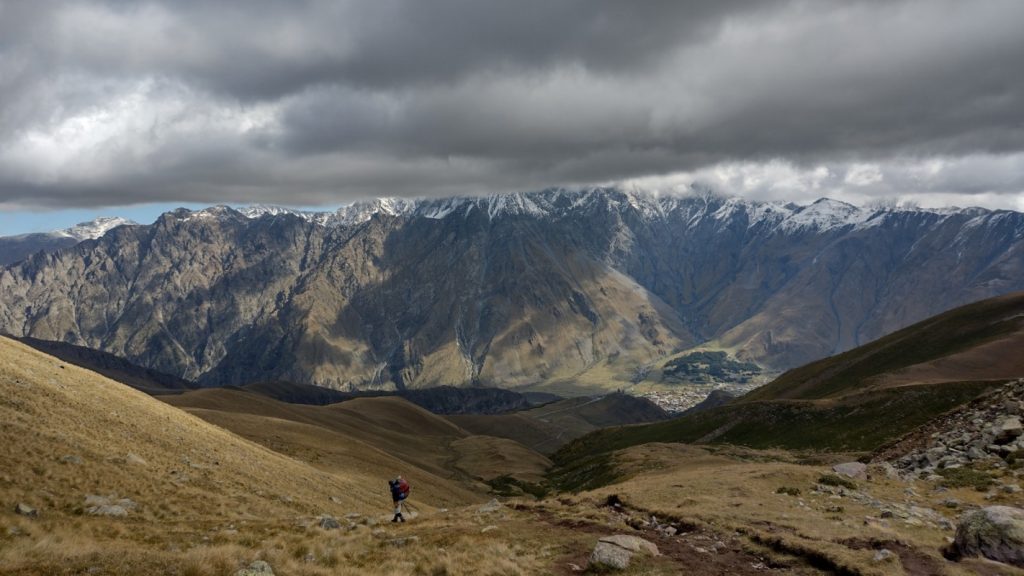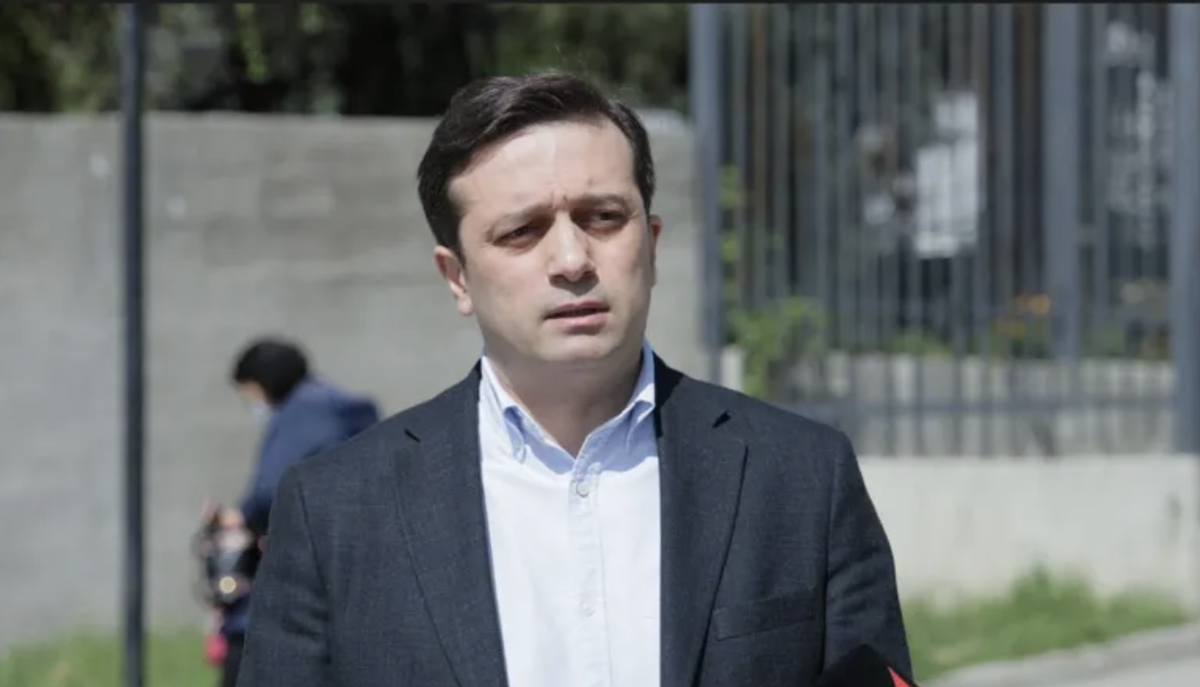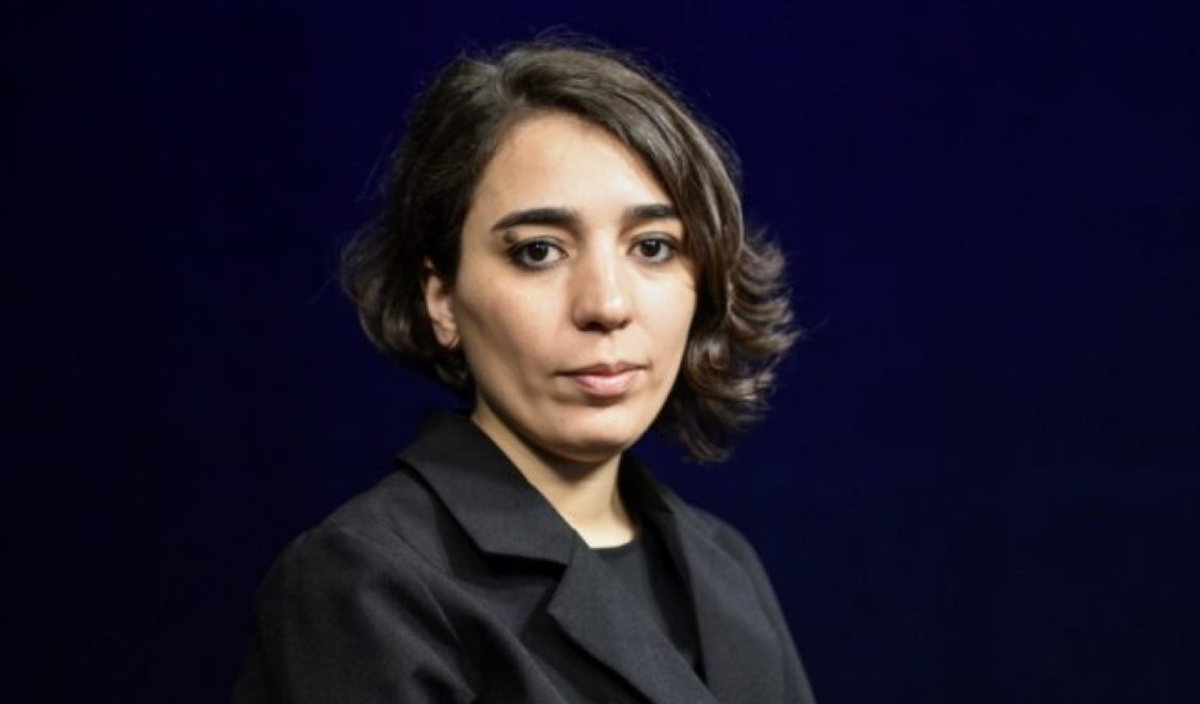Mount Kazbegi within a hand's reach
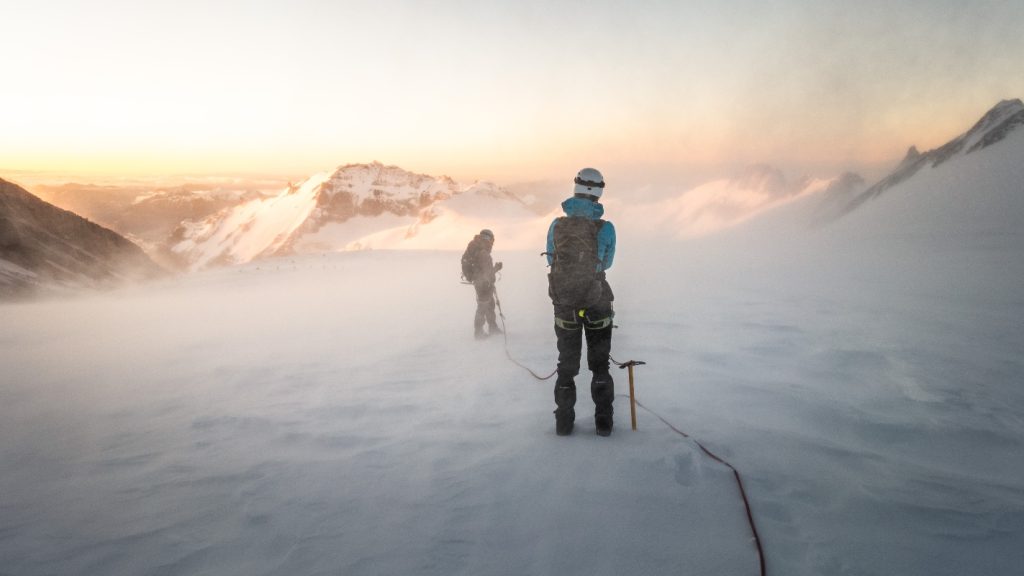
All you need to do is take another step – that’s what I was telling myself while walking in the middle of the night in mountains covered in snow. Every step was a pain as well as relief, because I knew that as long as I am moving, I am getting closer to the end – the peak of Mount Kazbegi, 5,054 meters above the sea level.
I woke up in complete darkness, just before the alarm went off. It was two in the morning and I felt full of energy as well as adrenalin. Today is the day we have been preparing for. Today, new period of my life starts, because after today, I can finally call myself an alpinist: a person climbing up to the highest mountains using ice axe, harness and crampons, unafraid of high elevation, snow, rocks, or glaciers.
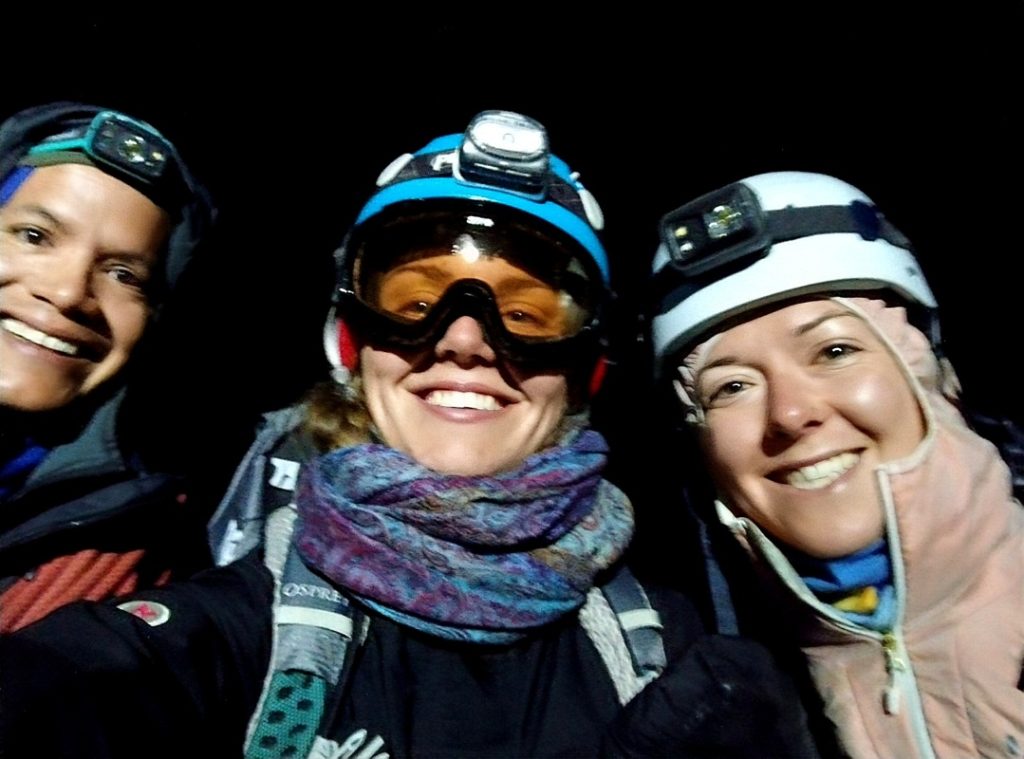
After a fast breakfast at two AM, which consisted of coffee for some, or a sip of Czech homemade peach brandy for others (me), it was time to start walking. Apart from us, another four groups were leaving same night. The problem was, nobody wanted to go first. As the snow was still fresh, the first hikers would surely sank deep into it with every new step and the climb would require extra time and energy. Also the wind is stronger for the first person then for those walking behind.
Our guide Mohamed also did not want to be in the front, but as we were faster than the others, soon, we found ourselves in the lead. Far away from the civilization and its polluted air, all the light you can see comes from the reflection of the stars on the snow and your headlamp. Turning back and seeing the chain of lights on the forehead of other alpinists walking behind us was also quite magical.
After a while, we were challenged by strong wind. Only my nose was protruding out from my fully covered face, but still, the dust from the rocks got behind my goggles and was pinching my eyes. I was staring on the ground, concentrating on moving my feet forward. “All you need to do is take another step”, I was telling myself over and over.
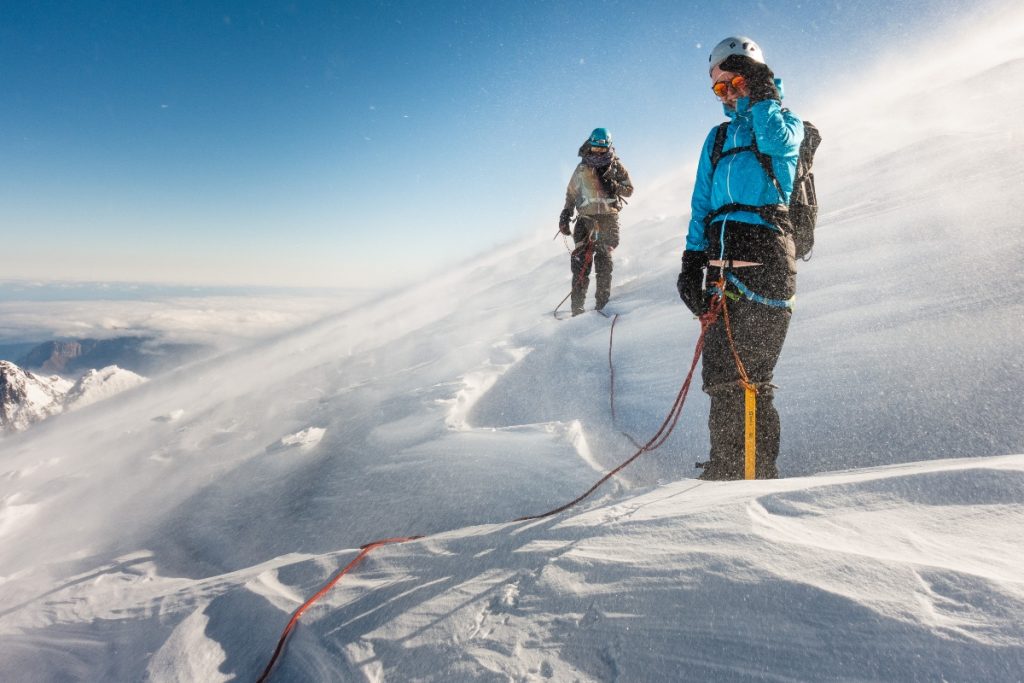
The worst part about climbing mountain Kazbegi in the winter is that even if you are tired as hell, taking a break is the last think you want, as after five minutes, the cold gets you. That is why with our speed, our group was soon far away from the others.
After a few hours, we arrived to the glacier. By the time, I was already unable to speak. “Are we doing ok? Marie, is everything good?”, Mohamed was asking me but I was too exhausted to answer. I was freezing and hungry and so I took a minute to pull out my sweet müsli bar to get some energy. “I’m okey”, I whispered afterwards, but I asked him to lower the speed. From our group of four people, I was definitely the weakest one but I kept telling myself that I was still faster than the rest of the people climbing up that night.
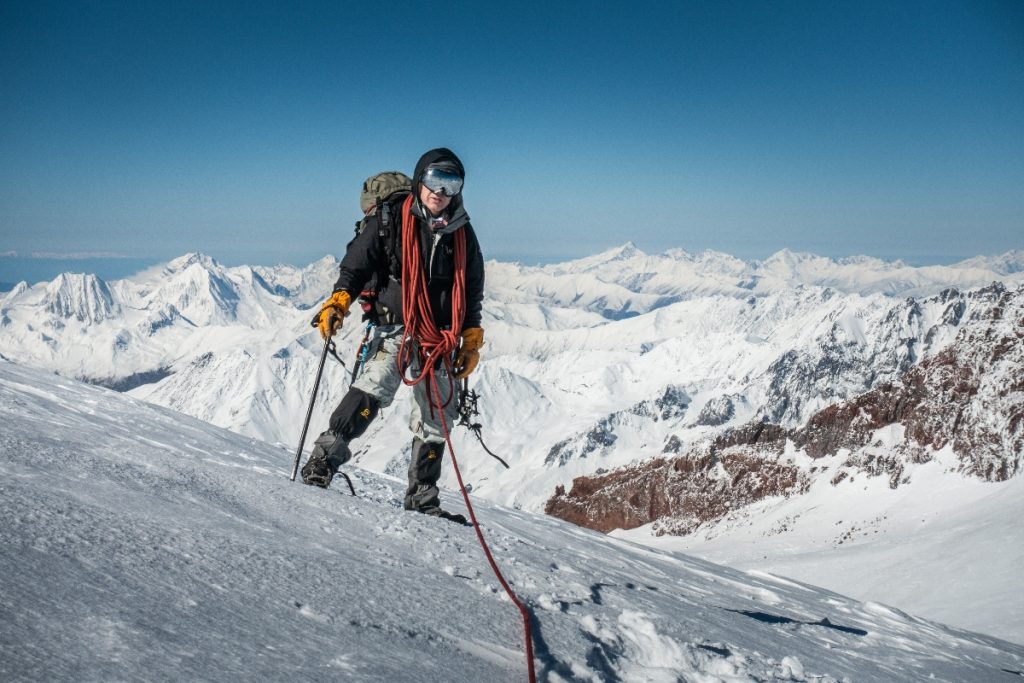
“We are all in this together”, the others reassured me and I knew they are right, because we had no other option. We were all connected by long rope, holding us together on maximum of a 7 meters distance from each other. That is the safety trick so that if one us falls, others can pick them up. We were practicing the situation over and over the day before, so if anyone screams, all of us need to lie down as fast as possible and stuck their ice axe into the snow.
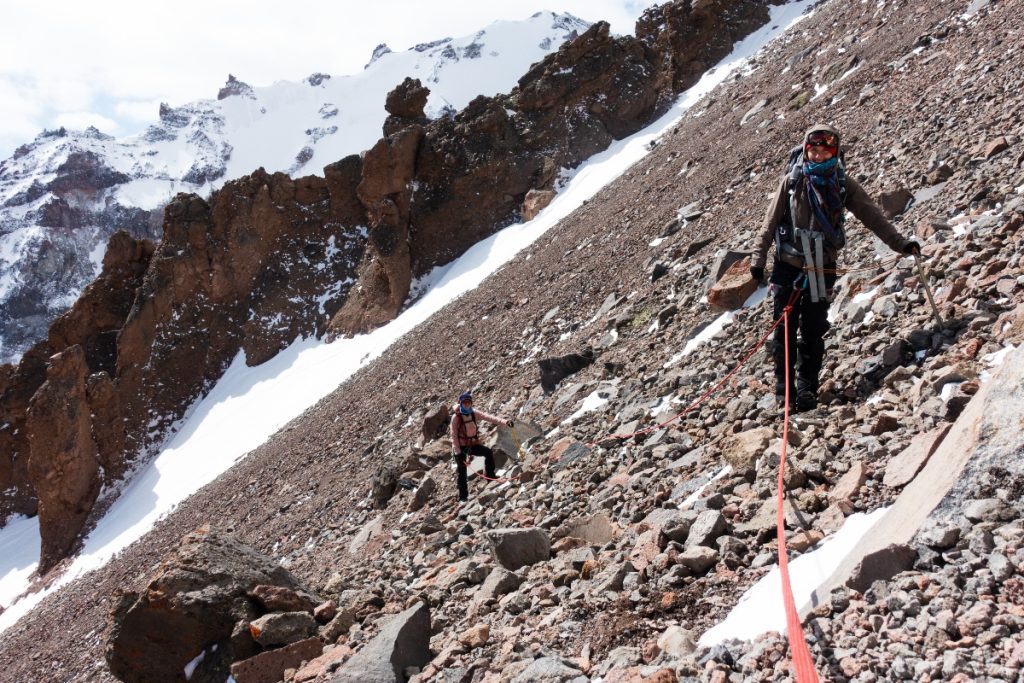
We knew what to do, but still I was praying that we would not have to do it. Even though Mohamed made no big deal from someone falling into the glacial rift. “If you have enough energy, you can just use your crampons and ice exe to climb up. Otherwise, we will pull you up”, he said calmly.
Being connected by the rope to each other also means that if one decides to turn back, the others must follow. But of course I did not want to be that person, so I was just putting my feet ahead of each other, one by one, moving toward the peak. Around seven o’clock, the sun started coming up and coloured the horizon in red and purple. It was breathtaking! Or was it the elevation sickness?
At 9:30, we were just under the peak. My feet were freezing and Mohamed was walking slower and slower. We were stopping every ten meters and I was getting more and more nervous, wondering what was going on. At one point, Moh turned back and said: “I don’t feel good about this snow. We are in a good shape, we have great time and in one hour, we can reach the peak. Its ok if all we want is to climb the peak, but I am worried about the way back. When the sun comes higher, this snow will get wet and I guess there is 80% risk of avalanche”, he explained while we listened to him carefully. “I would take the risk, but I can’t decide that for you”.
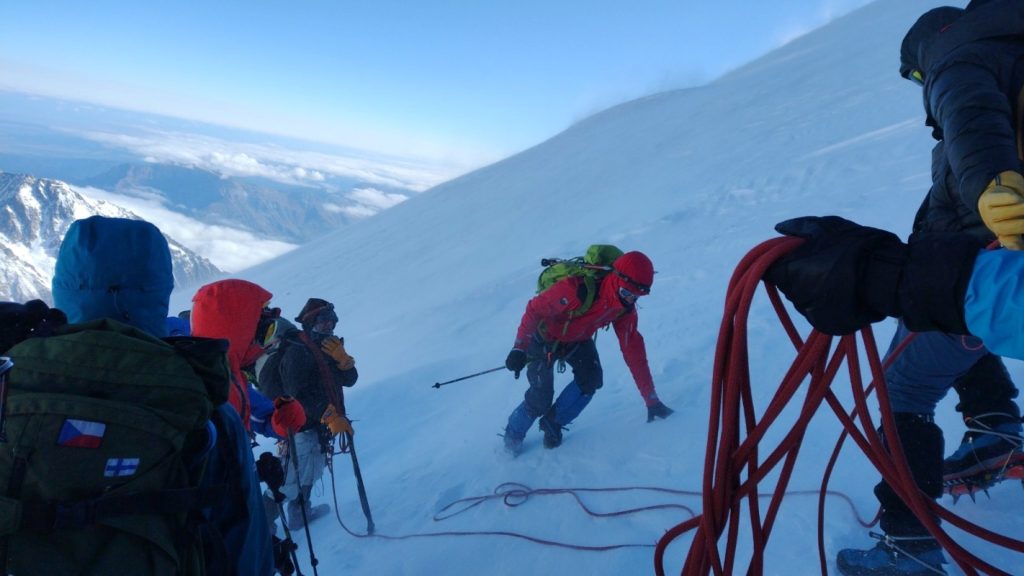
From that place, 4,800 meters above the sea level, we could see the peak. It was so close I felt I could touch it. At the same time, I could see the snow dunes above, threatening us with the slope of 45° – that’s a perfect incline for avalanche and there was an avalanche just two weeks prior. “Being able to turn back is the most important skill of every alpinist”, I’ve heard my Czech alpinist friend’s voice in my head and at that moment, I did not have any doubts.
We were rushing back towards the sunny part of the mountain. I do not remember much from the way back, as I just could not wait to be in the Meteo hut again. Only there I realised what a big decision it was to turn back. Everyone we met was congratulating us for reaching the peak and to everyone, we had to explain that we had not reached it. It was only then that I started to feel sad about it. But then another member of our group told me: “I am not sad, because I know that if the weather conditions were good, we would have reached it. It was not up to us”. And she was right.
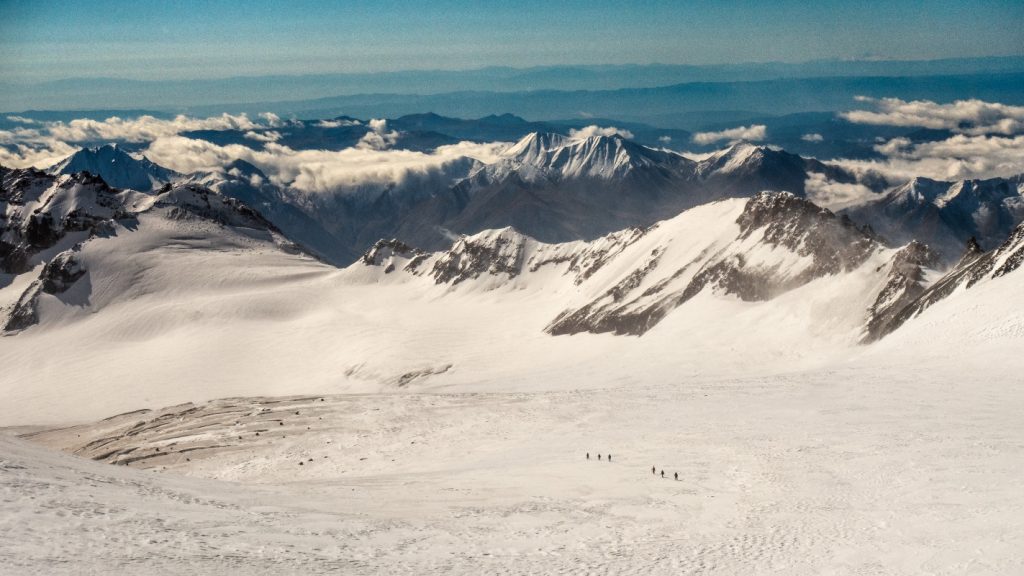
That night, we build up the tents in the snow, we ate instant soup and drank hot tea and coffee and we felt like heroes. I wanted to become an alpinist, and that does not always mean reaching the peak, it could also mean being clever enough to turn back, so that it does not become your last peak. The most important thing is to have the option to try again.
